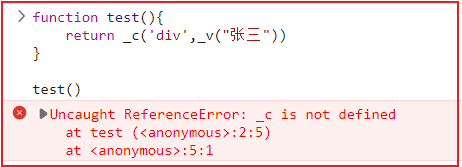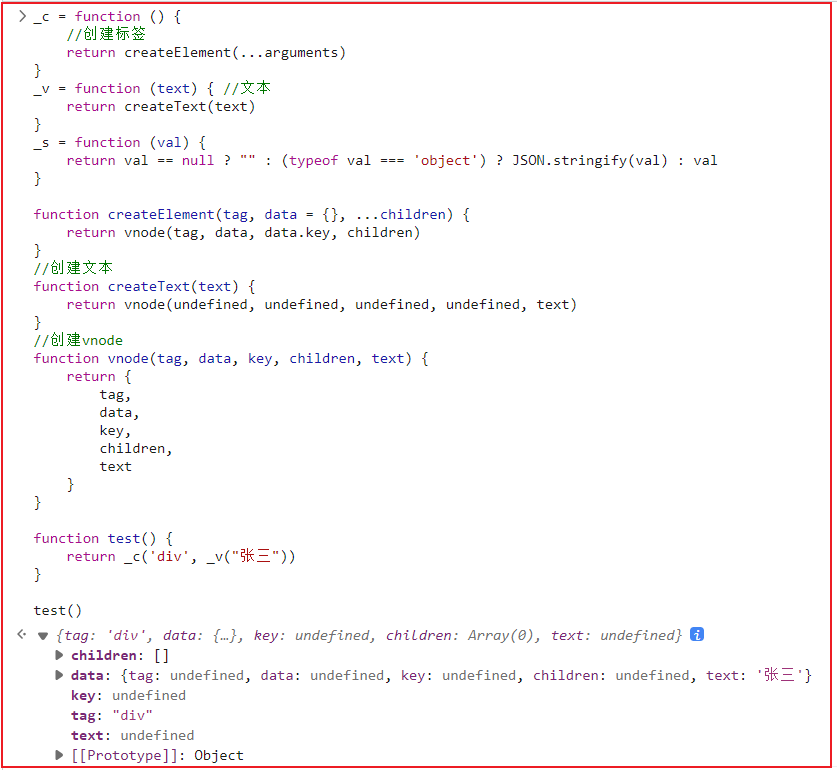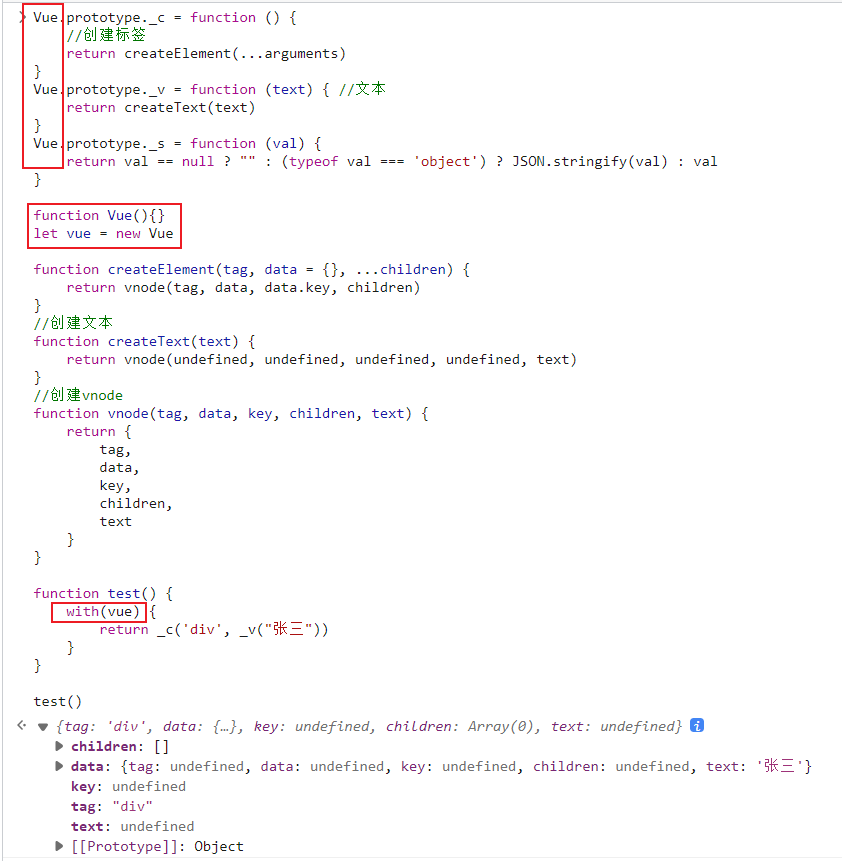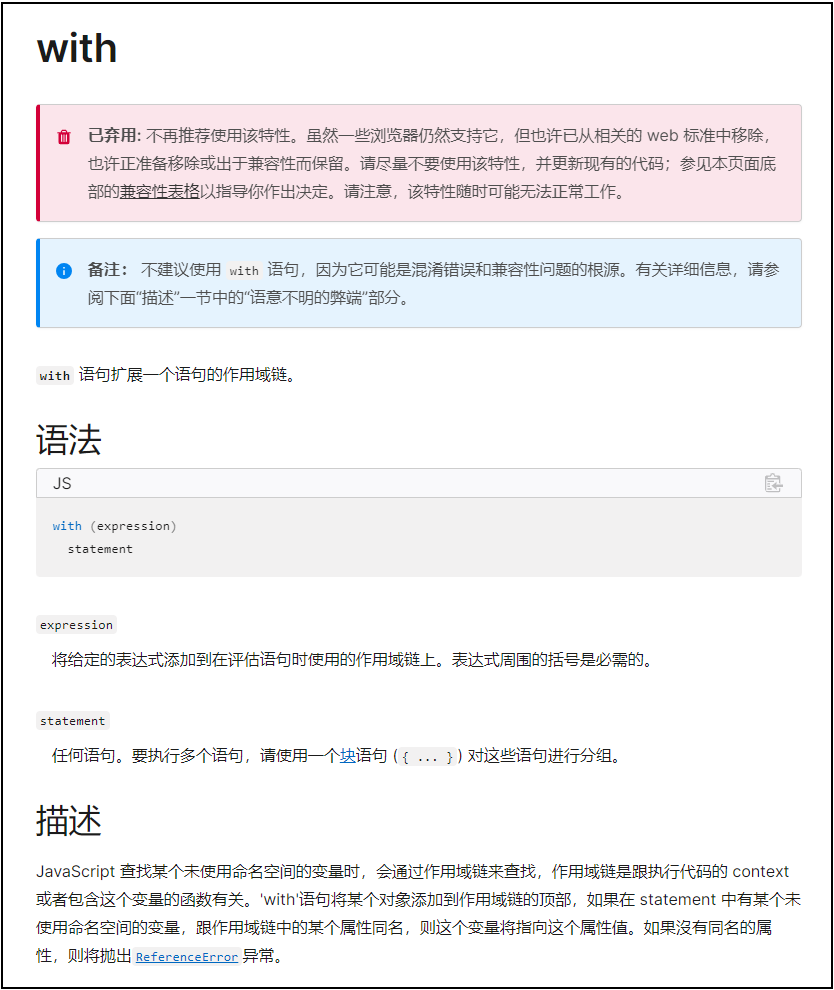Vue原始碼學習(六):(支線)渲染函數中with(),call()的使用以及一些思考
2023-09-15 15:00:44
好傢伙,
昨天,在學習vue原始碼的過程中,看到了這個玩意

嘶,看不太懂,研究一下
1.上下文
這段出現vue模板編譯的虛擬node部分
export function renderMixin(Vue) {
Vue.prototype._c = function () {
//建立標籤
return createElement(...arguments)
}
Vue.prototype._v = function (text) { //文字
return createText(text)
}
Vue.prototype._s = function (val) {
return val == null?"":(typeof val ==='object')?JSON.stringify(val):val
}
Vue.prototype._render = function () { //render函數變成 vnode
let vm = this
let render = vm.$options.render
console.log(render,'||this is render')
let vnode = render.call(this)
// console.log(vnode)
return vnode
}
}
//vnode只可以描述節點
//建立元素
function createElement(tag,data={},...children){
return vnode(tag,data,data.key,children)
}
//建立文字
function createText(text){
return vnode(undefined,undefined,undefined,undefined,text)
}
//建立vnode
function vnode(tag,data,key,children,text){
return {
tag,
data,
key,
children,
text
}
}
我實在是看不懂這個_render方法在幹什麼,所以我們開始研究
2.凍手嘗試
2.1.方法返回方法
寫一個簡易版本,在一個空白頁

(顯然這會失敗,方法返回的方法未定義)
2.2.加上方法定義
_c = function () {
//建立標籤
return createElement(...arguments)
}
_v = function (text) { //文字
return createText(text)
}
_s = function (val) {
return val == null ? "" : (typeof val === 'object') ? JSON.stringify(val) : val
}
function createElement(tag, data = {}, ...children) {
return vnode(tag, data, data.key, children)
}
//建立文字
function createText(text) {
return vnode(undefined, undefined, undefined, undefined, text)
}
//建立vnode
function vnode(tag, data, key, children, text) {
return {
tag,
data,
key,
children,
text
}
}
function test() {
return _c('div', _v("張三"))
}
test()
成功執行

2.3.回到專案
現在再回到我們的專案
我們知道,渲染函數的_c,_v,_s等方法被定義在Vue的prototype上的
不可能像上述案例這樣直接定義在全域性
我們在寫一個例子,這裡用上with()

同樣,執行成功了

所以,我們能看到,正如mdn檔案所說,
在這個例子中with()方法拓展了一個test()方法的作用域鏈
於是,到這裡,最難的問題已經解決了
3.程式碼分析

在這裡我們知道this指向Vue範例

來看這串程式碼
console.log(this,"||this is this")
let vnode = render.call(this)
在 JavaScript 中,.call() 方法可以用於呼叫函數,並且可以顯式地指定函數執行時的作用域(即 this 值)。
於是,一切都通暢了
這一大段的程式碼無非做了這麼幾件事
1.在Vue的原型上定義_c,_v等節點處理方法
2.( render.call(this) )將render方法的作用域指定為this,即Vue範例本身
3.( with(this) )此處 with(this) 塊中的 this 則指向渲染函數 render 執行時的上下文,也是 Vue 範例
4.隨後,_c,_v等方法執行建立虛擬節點,返回